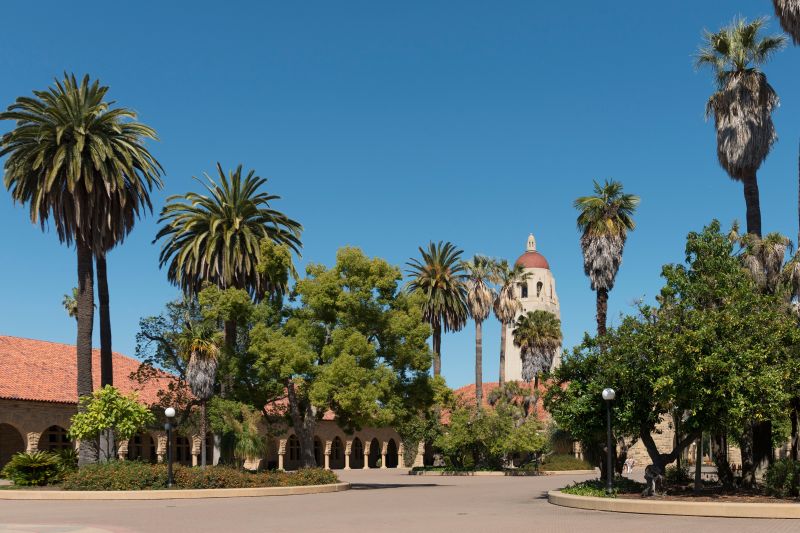Yesterday’s op-ed “Losing spring” in The Stanford Daily calls for students to heed the University’s warnings and leave campus. The sentiment and logic are understandable: As Bryce Tuttle writes, “the fewer people on campus, the fewer people there are to spread the virus.” This would make the Farm a safer place for those who are most vulnerable to coronavirus. To make matters worse, Stanford is a petri dish for coronavirus. We worryingly resemble the Princess Diamond cruise ship: Cramped quarters, communal bathrooms and shared eating spaces are ideally suited to spreading disease.
Given these circumstances, it’s worth reiterating to those who plan to stay at Stanford the importance of social distancing and, in particular, prioritizing the needs of immunocompromised people. This is, after all, a crisis that belies individualism and demands that we act in the best interests of our community.
Petri dish Stanford, however, is still far better than the alternative. Allowing Stanford students to spread the virus beyond the confines of the Farm would be a grave, irresponsible mistake, and one that the American government itself should prevent.
For proof of this, we should look to China’s experience with coronavirus. On Jan. 22, when the severity of the situation in Hubei province became clear, Beijing suspended all transportation in and out of Wuhan. This decision, as drastic as it may have seemed, was vital to China’s subsequent ability to contain the virus. The Chinese Communist Party knew well that it would be far easier to control coronavirus by restricting it to one center. Tedros Adhanom Ghebreyesus, the director-general of the WHO, commended Beijing for “setting a new standard for outbreak control,” and has said that China “should be thanked for hammering the epicenter. They are actually protecting the rest of the world.” It is doubtful that China could have set that standard had there been multiple serious outbreaks across the country.
There were just 571 reported cases in China when transportation from Wuhan was shut down. Today, the United States has over 1,100 cases — and yet it seems to have taken no clear steps to contain the already existing outbreaks, with no internal restrictions on travel. This has contributed to a worrying situation in which there are multiple epicenters in America, with 335 reported cases in Washington State, 213 in New York, 197 in California and 95 in Massachusetts. Given how few Americans have been tested for the virus, the actual number of cases could be far greater.
To stymie the crisis, it’s vital both that the current outbreaks are contained and that the further spread of the virus is prevented. Infected people in California should not be allowed to pass the virus to the rest of the country, and this applies to Stanford too. This, however, was Trump’s responsibility. Through failing to introduce the measures necessary to efficiently contain the virus, the American government has left Stanford in a very difficult position.
And yet, turning to the Farm, it would be especially irresponsible for Stanford students to spread the virus. After all, most undergrads are young and able-bodied, and will experience coronavirus as a moderate cold. By contrast, the home communities of Stanford students are likely to have a far greater proportion of elderly people — the most vulnerable demographic. Think, for instance, of my 75-year-old father.
Things are simply much more difficult for immunocompromised students. But that being said, all undergraduates have health insurance (per University requirements). By contrast, there are 18 million Americans without health insurance, and even those for those with health insurance, testing and treatment may not be free of charge.
This is a crisis that will disproportionately hit the same poor and non-white communities who have continuously been failed by America’s deeply backward social infrastructure — or lack thereof. Strange as it may be to say, Stanford, by the standards of much of America, is not a bad place to have an outbreak. Undergrads and grad students should not be allowed to leave campus, in part to protect those places in America far more vulnerable than we are. In fact, we may even say that coronavirus is a chance for well-resourced communities such as Stanford to step up and accept containment, as long as we look after those who aren’t so fortunate within our midst.
Stanford’s decision — shared with many other universities — to encourage students to leave was thus deeply mistaken. No doubt about it, Stanford as a petri dish is very bad, but letting students scatter, and in so doing allowing the virus to spread, is far worse. For when approaching coronavirus, we must not only think of the Stanford community but also of the nation.
Contact Ravi Veriah Jacques at raviveriahjacques ‘at’ stanford.edu.
